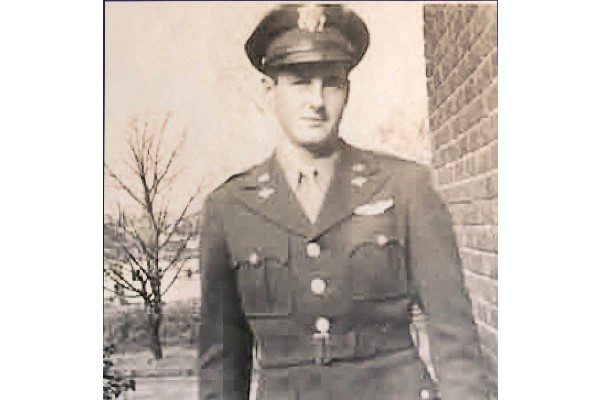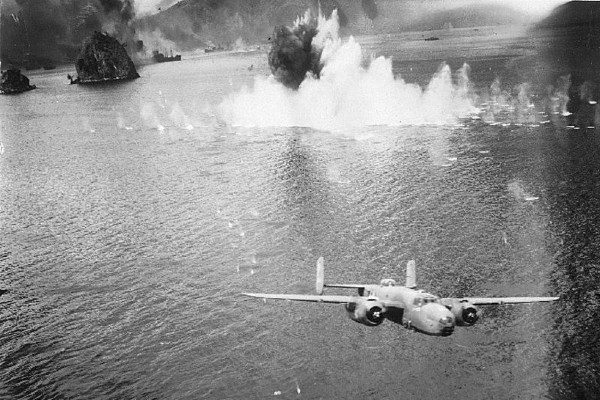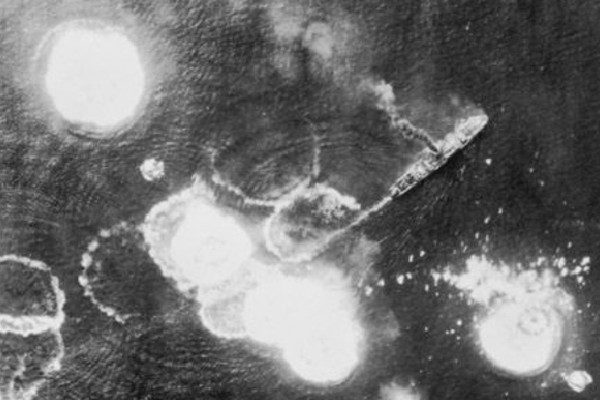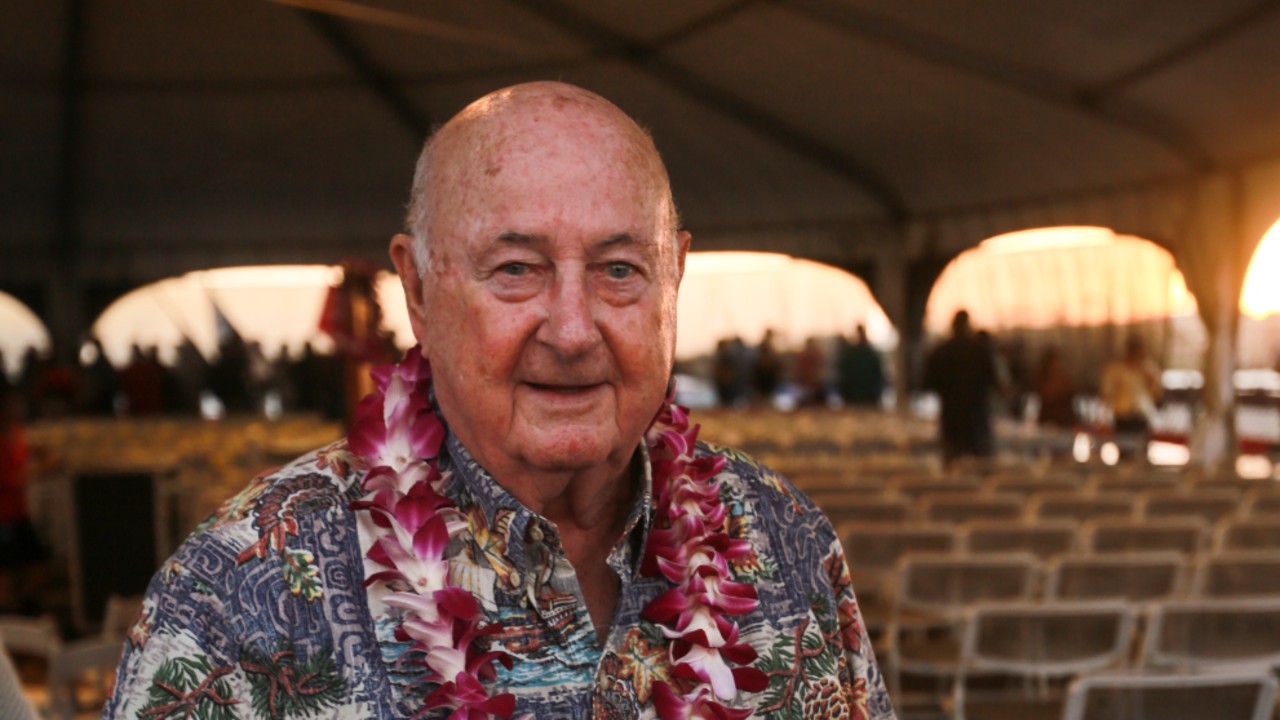
Former WWII bomber pilot Jack DeTour shares his story of valor and victory flying B-25s in the Pacific war.
Immediately after graduating high school in Oregon, Jack DeTour enlisted in the Army Air Corps. Like many other young patriots, he was eager to serve his country after the devastating Dec. 7, 1941, attack on Pearl Harbor.
 A young Jack DeTour after graduating flight training.
A young Jack DeTour after graduating flight training.
When one teaches, two learn
Upon earning his wings and developing his skills as a B-25 pilot, Jack was sent to Colorado to instruct others on the lethal abilities of the plane. Though he was disappointed at the time, he shared that his experience instructing added to his flying proficiency and is part of the reason why he survived combat.
“By teaching something, you learn it much better than just being the student.” – Jack Detour
 A B-25 engaged in “mast head” bombing in New Guinea.
A B-25 engaged in “mast head” bombing in New Guinea.
Joining the 38th Bombardment Group
After 10 months of teaching, Jack finally sailed to Australia to begin his combat duties with the 38th Bombardment Group. Their job was to provide airpower in the South West Pacific Area, disrupting Japanese activity from the Philippines to New Guinea.
Waging war in the area was grueling. The Japanese had staked a claim from the Philippines to New Guinea, building airfields and supply harbors, and embedding troops in the swamps and jungle. Unbearable temperatures, humidity and rain were an enemy, too. Supreme Commander in the Pacific, Gen. Douglas MacArthur, found the perfect leader for the challenge: General George Churchill Kenney, a seasoned military strategist and former WWI fighter pilot.
 Aeronautical genius Pappy Gunn modified the B-25 bombers to match a new combat tactic.
Aeronautical genius Pappy Gunn modified the B-25 bombers to match a new combat tactic.
Modifying the B-25
Bombing destroyers and troop ships from 7,000 ft. altitudes with a B-25 was hit or miss.
Commander of the 5th Air Force, General George Churchill Kenney, called upon former Navy officer, Pappy Gunn, to help them with this issue. Pappy was an aeronautical genius who modified the Martin bombers to have 14 forward facing 50mm canons, extra fuel tanks, and a relocated gun turret to match the new combat tactic. Dubbed by Kenney as his “commerce destroyers,” these Gunn B-25s flew 20 feet off the surface directly at a ship, firing hundreds of rounds and dropping skip-bombs that penetrated the hull.
“We were flying mast-level attacks capable of cutting a destroyer in two. More than once, our bombers returned with ship rigging wrapped around their wings.” – Jack Detour
 Japanese transport under aerial attack in the Bismarck Sea March 3, 1943.
Japanese transport under aerial attack in the Bismarck Sea March 3, 1943.
Flying into the throes of two Epic Battles
“Soon, we learned that a desperation convoy with thousands of troops and ammo to resupply the Japanese were heading to the north side of New Guinea,” Jack recalled.
In what was to become an epic battle known as the Battle of the Bismarck Sea, the 38th Bomb Group B-25s helped sink the transports at Bismarck, leaving only a few damaged support cruisers afloat. Had these ships arrived, they could have extended Japanese control of the region for another year.
Jack’s bombing group was then assigned the Ormoc Bay convoy, which was the largest convoy ever assigned to a single unit. Once again, the 38th B-25s destroyed and left only a few support cruisers afloat.

